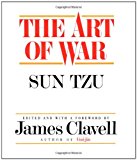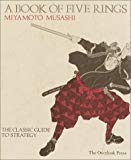The History of Light Infantry
For a long time peace was understood in negative fashion, simply as the absence of war. — Yvon Garlan
In the introduction to the book “The Greek State at War”, Kendrick Pritchett points out that in order to write history of Greek warfare one would require a knowledge of many aspects of Greek life. The would-be investigator would have to be familiar with terrain in the case of any given battle, have an acquaintance with the archaeological artifacts of various types, close familiarity with the written sources, and most important, an understanding of the general economic picture. He would also need some insight into ancient religion and acquaintance with military and naval procedures and strategy.
There is a definite truth about the statement. Even such narrow subject as development of light infantry in ancient Greece requires inquiries in multiple areas of overall Greek history. The knowledge of what ancient Greeks considered light infantry, an insight on development of ancient Greek infantry in general, agricultural warfare, key historical event that assisted in changing Greek outlook on war: these areas are absolutely essential in researching the subject of light infantry in Ancient Greece.
Researching the primary sources for the subject of “light infantry” an investigator would find a puzzling fact; there are little or no references to the subject of inquiry. Ancient historians Thucydides, Xenophon, Herodotus, do not refer to “light infantry” troops, instead they use term peltast. It appears that the term peltast signifies a “light armored warrior” for the ancient historians. The term itself comes from pelta or pelte - a small shield that inhabitants of Thrace used as their battle armor. We find descriptions of Thracian peoples in Herodotus The Histories:
“The Thracians in the army wore fox-skin caps on their heads, and tunics on their bodies; over these they wore embroidered mantles; they had shoes of fawnskin on their feet and legs; they also had javelins and little shields and daggers.”
Climate in Thrace, both political and weather wise, contributed to development of specific armor (or lack of it) and way of fighting. Ancient Greek historian Xenophon had served under Odrysian prince Seuthes in Thrace and recorded one of the campaigns in his treaties Anabasis.
From the description, Thrace appears to be very cold and snowy which is not uncommon for northern parts of Greece. It also explains why Thracian peltasts had no heavy armor, relied on maneuverability and preferred skirmishing techniques to battle in formation. Also, there is no account of Thrace developing a city-state or any other kind of political organization other than tribes. Which explains predominance of primitive way of fighting over organized formation. Arthur Ferrill argues that although there definitely was a contact between ancient Greeks and Thracians, it had little or no affect on Greek warfare in general. This point is arguable, since there is evidence (mostly pottery, unfortunately) that Thracian shield and helmet designs were used by Greeks from 460 BC and on. Also the appearance of ekdromoi - runner outs in Greek phalanx, was probably a result of contact with Thracians. Ekdromoi were young, physically fit warriors that were instructed to run out and prevent Thracian peltasts from harassing Greek formation. Consequently, ekdromoi had to give up some of their heavy armor to gain in maneuverability. Considering evidence in hand, Ferrill’s argument appears to be more plausible since history shows that it would take much more than skirmishes with Thracians to change Greek outlook on war and fighting.
Agricultural warfare, Greek Hoplites
Placing light infantry on the battlefield by the ancient Greeks signified the change in general Greek way of fighting. Roughly, “general way of fighting” is associated with hoplite phalanx warfare. Understanding hoplite warfare is essential in uncovering the origins of light infantry aside from it setting the pace of Greek life for almost five hundred years.
Sometime between 700 BC and 650 BC formation of heavy infantry or hoplites began to take place. The changes took place primarily due to social and political developments within Greece itself, appearance of polis, Greek city-state and extensive agriculture, which created communities of equal property owners. It is plausible to assume that Greek farmers out of concern that somebody would traverse their land began to arm themselves, farmer solidarity developed. Farmers organized in formations - phalanx or several columns of spearmen armed with shields hoplons (hence the name hoplite) heavy body armor. By default hoplites formed a heavy infantry unit, considering that in full armor with shield, sword, greaves, spear, breastplate, helmet and tunic the average weight amounted to two hundred and twenty pounds. Battles were fought by the way of two phalanx colliding and then competing in “pushing” or othismos until either side would give up break formation or attempt to flea the battle field. These shock troops became the object of admiration for Greeks, praising bravery, camaraderie, and endurance. Close ties developed with Greek way of life, giving new definition to courage, honor and masculinity. Multiple references of poets, historians and play-writes indicate fascination with hoplite warfare. As ancient Greek poet Tyrtaios said:
“No, No, let him take a wide stance and stand up strongly against them, digging both heels in the ground, biting his lip with his teeth, covering thighs and legs beneath, his chest and his shoulders under the hollowed-out protection of his broad shield, while in his right hand he brandishes his powerful war-spear and shakes terribly the crest high above his helm.
Hoplite warfare was the only way of fighting for a period little over two hundred years, farmers clashing with farmers over parcels of land, it was age when one battle decided the outcome of “war.” This type of warfare first, did not require elaborate tactical knowledge nor complex logistical systems, second, it was economically inexpensive since constant drilling and training was unnecessary, at least it seemed that way in Athens. Arthur Ferrill would argue that training was essential routine for hoplites. However, multiple primary sources indicate that hoplites primarily were farmers and concern themselves with land and crops most of the time. Examples of amateur farmers entering a formation without any prior training are plentiful. Xenophon’s account of war with Corinth 392 BC:
“On that day, at all events, so many fell within a short time that men accustomed to see heaps of corn, wood, or stones, beheld then heaps of dead bodies.”
Although, one has to agree that Spartan hoplites that were recognized as superior land force in formation, practiced rigorous training. However, the point stands to be in phalanx Greeks did not require training, to win the battles drill definitely had its advantages.
Meantime aside from inquiry into the roots of ancient Greek way of fighting the subject of emerging light infantry comes into play in the early fifth century BC. Two significant events can be credited for initiating military reform in ancient Greece.
Persian Wars (490, 480 - 478 BC)
Historian Herodotus carefully documented the account of Persian wars in his detailed work The Histories. In 490 BC small Persian expeditionary force sent by King Darius met Athenian phalanx in the battle of Marathon. Persians made a mistake in staking the outcome of the endeavor on one decisive clash of infantry formations. Considering that Greeks had two hundred years to practice such way of fighting it appears almost impossible to see the logic in Darius’ decision. But the war was not over yet, victory at Marathon resulted in Greek confidence in their way of fighting, superiority of the tight phalanx formation and courage of hoplites seemed to be absolute. In 480 BC King Xerxes, Darius’ son, came back to Ellas. This time Persians were well prepared for a full on invasion. Herodotus describes different peoples that Xerxes’ army employed as mercenaries on the way to Greece. The army was not a small expeditionary force, but rather an integrated army, concept yet unfamiliar to Greeks. Xerxes’ army had skirmishers, javelin throwing Thracian peltasts, cavalry, and various types of infantry. For the first time Greek phalanx were fighting with foreign invaders in a war where stakes were much higher than a number of cut down trees. The existence of all Greek peoples was at stake. It was a different type of warfare for Greeks where adversaries employed different, unfamiliar tactics and engaged in battles not for the sake of solving some property argument but rather for the domination of all Greece. Therefore, while the expansion of Xerxes’ colossal war machine continued, Athens and Sparta had to devise a way to stop it. So when the decision was made it reflected the Spartan view, the decision was to stop Xerxes by a decisive land battle. Armies met in the pass of Thermopylae.
Outline
1. The battle of Platea 479 BC
Battle that contrasts differences between Eastern and Western (Greek) way of fighting. References by Herodotus.
a) Changes within Greek warfare after encountering Persians. New outlook on war emphasized in Peloponnesian Wars. Reference by Thucydides.
2. Parallel development in Greek weaponry and armament.
Often ignored by historians but appears to be important tendency in the light of Persian invasion and Peloponnesian war. During the period of 250 years Greek Hoplites constantly modified their weaponry and armor making it lighter usually due to discomfort, weight and restricting maneuverability. References to Xenophon, Diodorus, Plutarch and Thucydides.
3. Mercenaries and Battle of Cunaxa.
Documented by Xenophon in Anabasis. Cunaxa has importance to the subject of development of light infantry, since it appears to be first account of changing hoplite units into more specialized light infantry and missile troops.
4. Iphicrates and Philip ||
Reference to Xenophon, Final stages of merging Eastern and Greek warfare styles, creation of specialized light infantry units and organizing and integrated army.
5. Conclusion
Brief summary/analysis of events leading to development of light infantry units. Emphasis on contacts with the Persians and professionalism of mercenaries plus changes in general view of war by the ancient Greeks as a result of such contacts.
Bibliography
- Hanson, Victor, “The Western Way of War. Infantry Battle in Classical Greece”
- Ferrill, Arthur, “The Origins of War. From the Stone Age to Alexander The Great”
- Greeks at War, Men at Arms Series (Osprey Publishing, London, 1979)
- Herodotus “The Histories” (Penguin, New York, 1996)
- Xenophon in Seven Volumes, 3. (Harvard University Press, Cambridge, MA; William Heinemann, Ltd., London, 1980.)
- Plutarch, “Moralia” http://www.persus.tufts.edu, Persus Project.
- Xenophon, “Hellenica”
- Xenophon, “Anabasis”
- Diodorus Book 15
- Thucydides “History of Peloponnesian War”
- Ancient Greece (Cambridge University Press, 1998)




